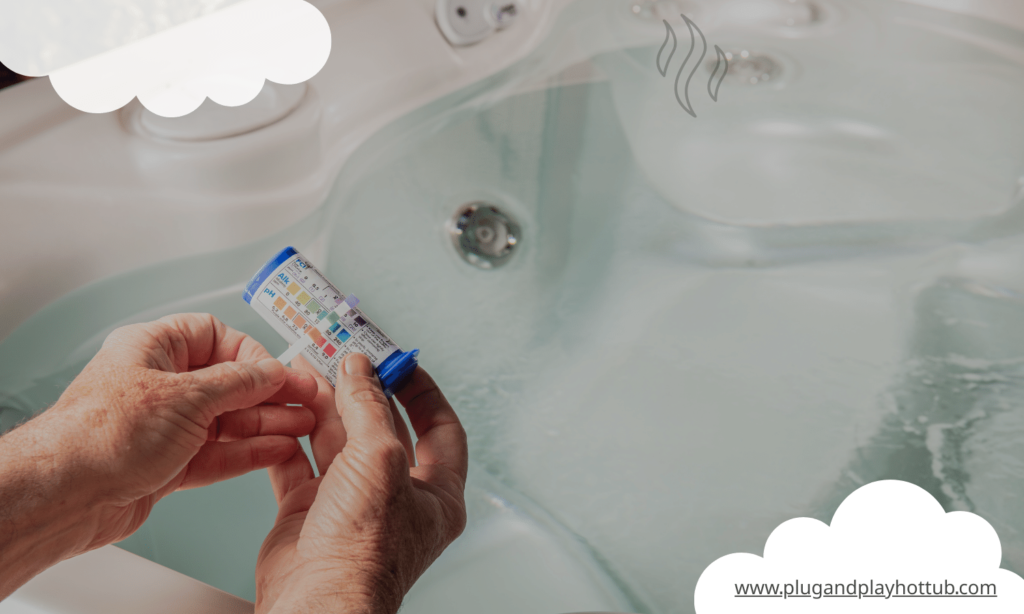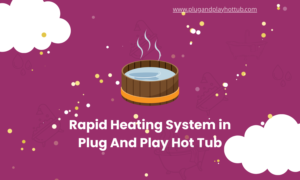
After investing in a convenient plug-and-play hot tub, the last thing you want is to deal with water chemistry issues. But if you notice cloudy water, trouble balancing pH, or scale build-up, high alkalinity may be to blame. Not to worry – with some simple testing and adjustments, you can get your alkalinity back in the optimal zone for healthy, sparkling spa water.
What is Alkalinity and Why Does it Matter in a Hot Tub?
Alkalinity refers to water’s ability to resist changes in pH. It keeps the tub water balanced. You want the alkalinity level in a hot tub to be just right – not too high or low. The proper alkalinity range helps components last longer too.
Most hot tub makers suggest keeping alkalinity between 80 to 120 ppm. If it’s lower, the pH bounces all over, damaging stuff. When higher, pH is hard to adjust, water clouds up, and scale builds up.
What Causes High Alkalinity in a Plug-and-Play Hot Tub?
A few things cause alkalinity to creep too high in a portable plug-and-play hot tub:
- Using too much pH or alkalinity booster is a common culprit.
- You also need to change the water regularly before minerals concentrate too much.
- And if your tap water naturally contains lots of minerals, it makes alkalinity rise.
- The water it comes with is balanced appropriately. But over time, chemicals decrease while minerals remain, increasing alkalinity.
How Can I Test and Monitor the Alkalinity Level?
An accurate test strip kit allows you to easily track alkalinity yourself. Simply dip a strip in the tub water for a few seconds. It changes color based on the alkalinity level. Match it to the color chart on the package.
For best results, check alkalinity when water is cool and calm – so not right after a soak! Testing first thing in the morning and before hopping in are smart moves too. At the start, aim for weekly tests until levels stabilize. After that, every few weeks is fine.
What is the Quickest Way to Lower High Alkalinity?
Draining some old water and adding fresh is the fastest way to lower high alkalinity. Swap out 15-30% of the water volume. If your tap water is hard, attach a filter when refilling to remove extra minerals.
After diluting the old water, retest. If still high, add an alkalinity decrease as needed per the label. Retest again in 24 hours and tweak as required.
Step-by-Step Guide to Lowering Alkalinity
Here’s a step-by-step guide to reducing high alkalinity:
1. Test Current Alkalinity Level
Use a test strip to check the current total alkalinity level.
2. Drain 15-30% of Water
Turn off the hot tub’s power. Attach a garden hose and drain 15-30% out depending on your reading. No drain valve? You’ll need to bail it out.
3. Refill the Hot Tub
Refill with fresh water. If your water is hard, attach a filter to remove excess minerals.
4. Retest Alkalinity
Turn the power back on and circulate the water. Then dip a test strip to check levels.
5. Add Alkalinity Decrease
If still high (over 120 ppm), add the recommended dose of alkalinity decreaser. Typically, 1 ounce per 100 gallons drops it 10-20 points.
6. Retest & Adjust as Needed
In 24 hours, retest alkalinity. If still high, add a smaller dose of Decreaser and recheck. Repeat until in range.
7. Use a Clarifier if Cloudy
If the water looks hazy or cloudy after adjusting, use a clarifying product. It helps particles settle so the filter traps them. Be patient, as lowering alkalinity means gradual tweaks. But with routine testing and small decreases, you’ll nail it!
Tips for Maintaining Proper Alkalinity Levels
Here are some useful tips for keeping alkalinity in check long-term:
- Drain and refresh all the water every 3-4 months
- Attach a pre-filter if refilling with hard water
- Use alkalinity uppers or downers in small amounts
- Initially, test weekly. Later monthly checks work.
- Adjust alkalinity before making big pH changes
Staying on top of testing and balance keeps water clear, safe, and primed for relaxation for years of soaks!
Getting a handle on alkalinity requires a little diligence at first, but monitoring and balancing levels properly prevents much larger issues down the road.
By learning to manage alkalinity in your self-contained hot tub, you’ll keep the water balanced and components in top shape for years of reliable relaxation and hydrotherapy.



